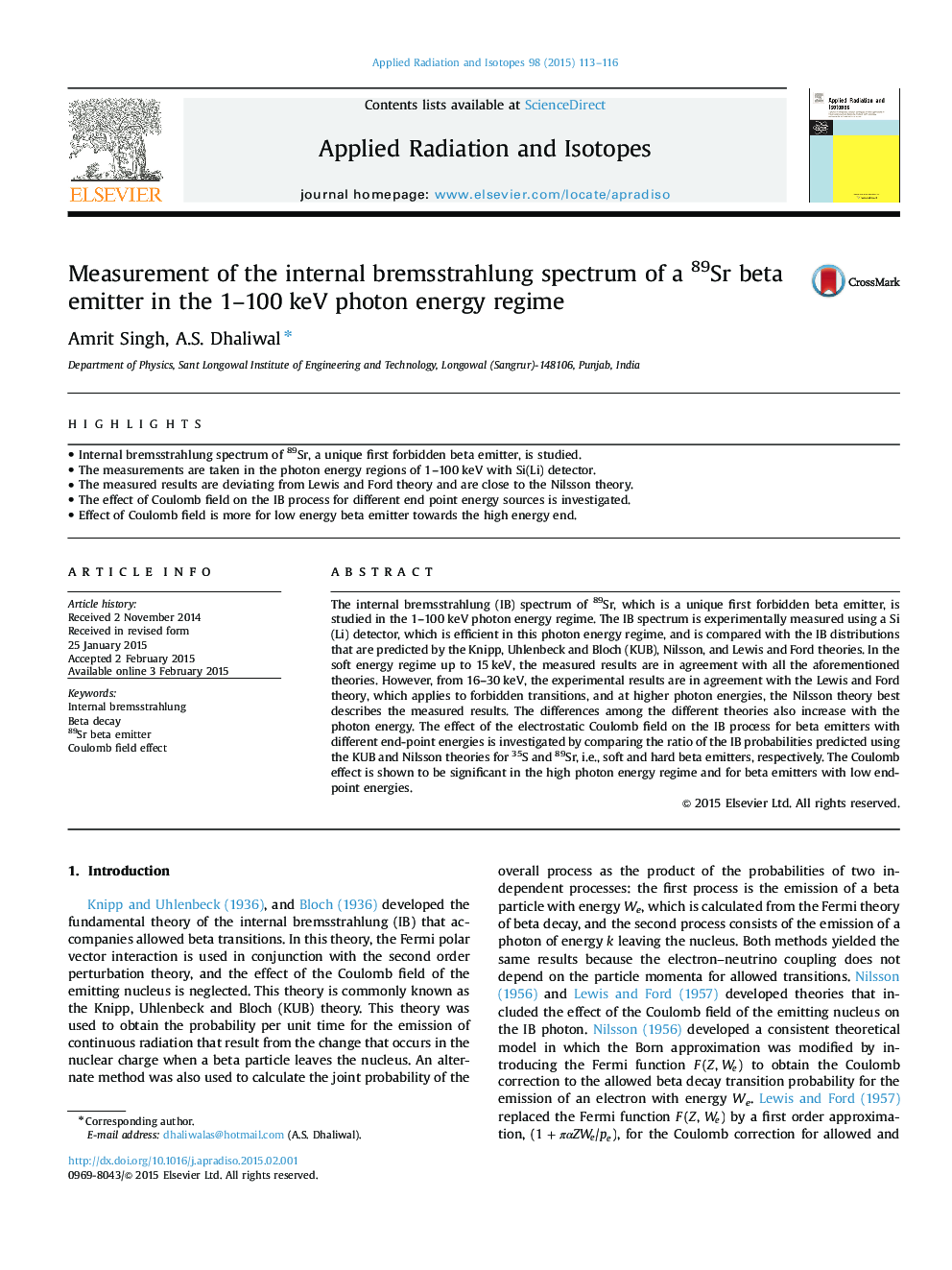| Article ID | Journal | Published Year | Pages | File Type |
|---|---|---|---|---|
| 8209696 | Applied Radiation and Isotopes | 2015 | 4 Pages |
Abstract
The internal bremsstrahlung (IB) spectrum of 89Sr, which is a unique first forbidden beta emitter, is studied in the 1-100Â keV photon energy regime. The IB spectrum is experimentally measured using a Si(Li) detector, which is efficient in this photon energy regime, and is compared with the IB distributions that are predicted by the Knipp, Uhlenbeck and Bloch (KUB), Nilsson, and Lewis and Ford theories. In the soft energy regime up to 15Â keV, the measured results are in agreement with all the aforementioned theories. However, from 16-30Â keV, the experimental results are in agreement with the Lewis and Ford theory, which applies to forbidden transitions, and at higher photon energies, the Nilsson theory best describes the measured results. The differences among the different theories also increase with the photon energy. The effect of the electrostatic Coulomb field on the IB process for beta emitters with different end-point energies is investigated by comparing the ratio of the IB probabilities predicted using the KUB and Nilsson theories for 35S and 89Sr, i.e., soft and hard beta emitters, respectively. The Coulomb effect is shown to be significant in the high photon energy regime and for beta emitters with low end-point energies.
Keywords
Related Topics
Physical Sciences and Engineering
Physics and Astronomy
Radiation
Authors
Amrit Singh, A.S. Dhaliwal,
